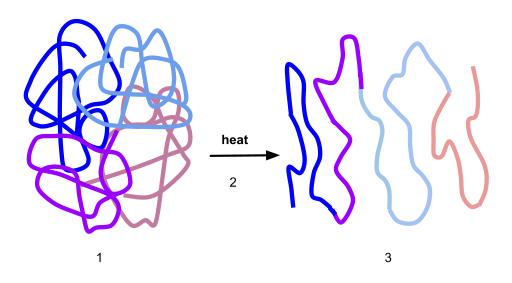We love steaks, we love hamburgers, and yeah we love barbecue. Actually, meat can be very tasty and we have this taste board feeling when it comes to something that is smoked or roasted over fire and while we enjoy these things, we do not always remember that everything has to do with science, and the science of passing meat through fire is quite fun.
In the roaster of a barbecue or on that pan where that Suya is being prepared, fire does great wonders because cooking is just pure thermodynamics and chemistry. When fire is made in the smoker or wherever the meat is being placed so as to pass through fire, air molecules are moving around really rapidly as a result of the fire and they transfer the energy from the air molecules to the meat which could either contribute to the chemical reaction in the meat or the temperature of the meat but in most cases, it is the both.
When a meat is roast cook, fried cook, or boiled cook, how do you know? Well, the answer is simply browning which is as a result of heat causing protein molecules to break down into amino acid after which they react with sugars to create that molecular delicious taste that we feel. Please do not mistake this reaction for Caramelization where sugar is burned, it is referred to as Maillard Reaction. Do not forget that meat always starts up as red because it is full of oxygen-carrying molecules called myoglobin which contains iron but as the heat goes up, the meat begins to turn brown via oxidation.
Meat is essentially muscles in the body of the animal we are cooking. It is basically made of Protein, fat, vitamins and minerals, Carbohydrates, and water, and although different meat have different names like Brisket coming from the chest area of cows, or Pork Shoulder, but they have the same makeup just at different compositions. These different types of meat are made up of connective tissues that keep them glued to themselves.
Collagen which is a protein in connective tissues make up about 25% of the total protein in an animal's body and this protein can become shrink and tight when cooked in high heat but lose and melt when cooked in slow heat. When the collagen is spread for a long time with slow heat, it begins to relax causing water to fill it in Hydrolysis and turning it to Gelatin which is what makes Barbecue tender.
Another thing present in meat is fat which is composed of triglyceride which is mostly saturated fat which has a higher melting point than unsaturated ones because they are stable and packed closely. When they fat is being heated, hydrogen bonds are disrupted and turned into liquid in a process known as rendering. So when you are eating that Barbecue remember that its taste comes from melting collagen to gelatin as well as liquefying fat in the process of rendering.
Back to the use of woods. Have you noticed that a barbecue cooked with electricity tastes different, smells different, and feels different? Well, this is because when using hard wood to prepare meat, the cellulose present in the wood caramelizes into sugar molecules that gives the meat its flavor and the lignin in the wood is converted into Vanillin, Phenols, Guaiacol, Ethyvanillin and so on. These chemicals can also act as a preservative.
With Barbecue, the meat ring still always looks red not because the myoglobin doesn't disappear, it is because the smoke contain carbon monoxide and nitric oxide which is from wood burning. The nitric oxide-myoglobin compound that reaches the meat appears to be pink which is why the edges are red while the interior is brown.
REFERENCE
https://www.ncbi.nlm.nih.gov/pmc/articles/PMC4745522/
https://www.seriouseats.com/what-is-maillard-reaction-cooking-science
https://www.ncbi.nlm.nih.gov/pmc/articles/PMC9177216/
http://chemistry.about.com/b/2013/05/05/barbeque-carcinogens.htm
https://www.ncbi.nlm.nih.gov/pmc/articles/PMC3003457/
https://amazingribs.com/technique-and-science/cooking-science/basic-meat-science/
https://www.ncbi.nlm.nih.gov/pmc/articles/PMC8877210/
https://www.sciencedirect.com/science/article/pii/S0006349510003516
https://amazingribs.com/more-technique-and-science/more-cooking-science/smoke-ring-mythbusting/https://www.ncbi.nlm.nih.gov/pmc/articles/PMC10818928/
https://www.sciencedirect.com/science/article/pii/S259023851930284X
https://meat.tamu.edu/texas-bbq/bbq-science/


